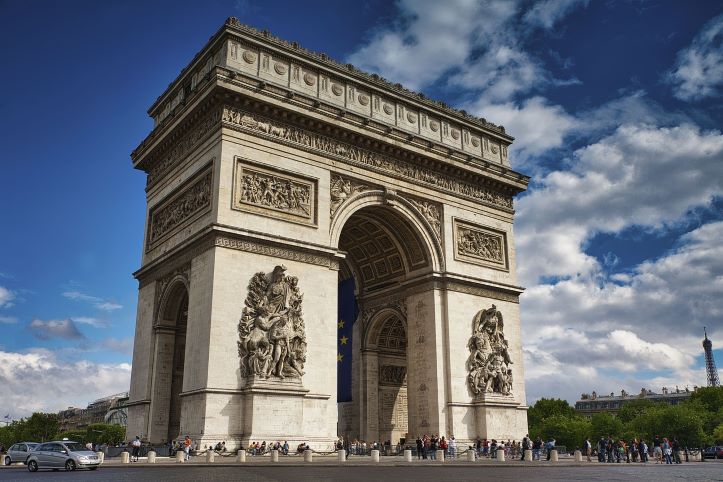Europe, a continent steeped in rich history and vibrant culture, boasts an array of iconic landmarks that have captured the hearts and imaginations of travelers from around the world. These landmarks, each with its own unique story and architectural splendor, stand as testaments to the intricate tapestry of human creativity and achievement. In this article, we will discuss the 20 must visit landmarks in Europe. From the ancient ruins of Rome’s Colosseum to the modern innovation of London’s Millennium Bridge, Europe’s landmarks are not just monuments; they are living witnesses to the evolution of societies and the passage of time.
As you board on a journey through the cobblestone streets and picturesque landscapes, you’ll find yourself surrounded by the tangible remnants of bygone eras and the enduring spirit of innovation. Join us as we delve into the diverse and captivating world of Europe’s must-visit landmarks.
Historical Must Visit Landmarks in Europe
# The Colosseum, Rome, Italy
Standing proudly in the heart of Rome, the Colosseum is not merely a structure of stone and mortar; it’s a testament to the might and magnificence of the ancient Roman Empire. This architectural marvel, also known as the Flavian Amphitheatre, has endured the passage of centuries, retaining its stature as an unparalleled symbol of historical significance and architectural genius.
The Colosseum’s roots stretch back to AD 70-80, a time when the Roman Empire was at its zenith. Its construction was commissioned by the Flavian dynasty, and its completion marked a celebration of imperial power and the spoils of conquest. The amphitheater’s primary purpose was to host grand spectacles, from gladiatorial contests and dramatic performances to mock sea battles. It became a reflection of the opulence and entertainment that the empire could provide.
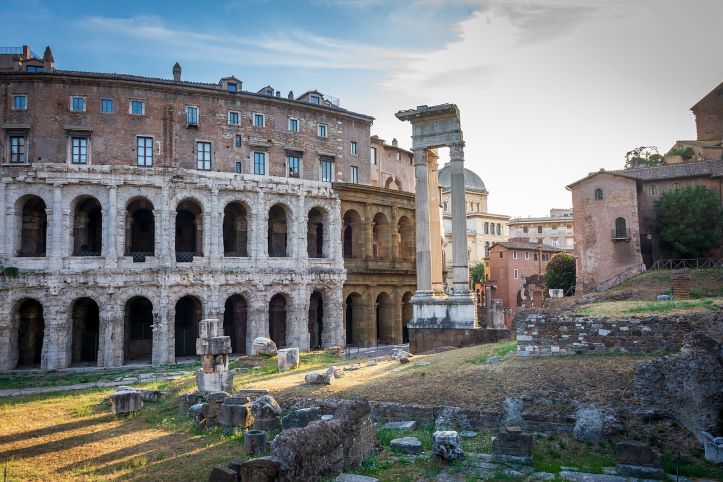
The sheer scale of the Colosseum is awe-inspiring. With a seating capacity of around 50,000 spectators, it showcased the Romans’ engineering prowess in creating such a colossal structure. The elliptical shape of the amphitheater, coupled with its tiered seating arrangement, ensured that every member of the audience could witness the events unfolding in the arena.
One cannot discuss the Colosseum without mentioning its most infamous spectacles: the gladiatorial contests. These brutal clashes between skilled fighters served as a form of entertainment for the masses. Gladiators, often slaves or prisoners of war, fought for their lives in battles that mixed skill, strategy, and survival instinct. The Colosseum’s arena witnessed countless stories of bravery and tragedy, making it a place of both fascination and reflection on the human condition.
# Acropolis of Athens, Greece
We kept “Acropolis of Athens” as the first one among the must visit landmarks in Europe. Perched atop a rocky hill overlooking the city of Athens, the Acropolis stands as a living testament to Greece’s illustrious past. This ancient citadel, a masterpiece of architectural achievement, not only bears witness to the passage of time but also embodies the rich historical tapestry of the land where democracy was born.
The Acropolis holds a sacred place in the annals of history. Dating back to the 5th century BC, this citadel was the epicenter of Athens’ cultural, political, and religious life. It served as a fortified stronghold during times of conflict and as a sanctuary for important temples dedicated to various gods and goddesses. The Acropolis embodies the ideals of ancient Greek civilization, from its democratic governance to its artistic accomplishments.
At the heart of the Acropolis stands the Parthenon, an iconic temple dedicated to Athena, the goddess of wisdom, courage, and inspiration. This Doric masterpiece is a symphony of architectural precision and artistic prowess. Built under the guidance of visionary sculptor Phidias, the Parthenon’s intricate friezes and sculptural decorations immortalize ancient myths and historical events. Its very existence is a testament to the Athenians’ devotion to their patron goddess and their desire to showcase their city’s grandeur.
# Stonehenge, Wiltshire, England
Nestled in the expansive landscape of Wiltshire, England, Stonehenge stands as an enigmatic prehistoric monument that has captivated minds for centuries. This mystical marvel, shrouded in mystery and ancient lore, continues to draw visitors from around the world who seek to unravel its secrets and connect with a distant past.
Stonehenge’s origins, purpose, and construction remain subjects of speculation and wonder. Dating back over 4,000 years, this ancient stone circle has weathered the ages, defying the passage of time. Its circular arrangement of massive standing stones, some weighing up to 25 tons, has sparked countless theories about its intended use. Was it an astronomical observatory, a sacred ceremonial site, or perhaps a burial ground? The uncertainty surrounding its true purpose adds to its mystique, inviting us to contemplate the rituals and beliefs of those who came before us.
In recognition of its cultural significance and historical intrigue, Stonehenge has earned the prestigious status of a UNESCO World Heritage Site. This designation not only underscores its importance to human history but also emphasizes the need to preserve and protect its legacy for future generations. As the sun sets behind the stones, casting an ethereal glow over the landscape, visitors are reminded of the interconnectedness of past and present.
# Eiffel Tower, Paris, France
Gracefully punctuating the Parisian skyline, the Eiffel Tower stands as an enduring emblem of the City of Light. This iconic iron lattice tower, with its elegant silhouette, not only symbolizes the romance of Paris but also represents an unparalleled feat of engineering prowess that has captured the world’s imagination.
The Eiffel Tower’s lattice structure, resembling delicate lace against the sky, is an unmistakable and beloved hallmark of Paris. Rising 324 meters (1,063 feet) tall, it was constructed as the centerpiece of the 1889 Exposition Universelle, a world’s fair celebrating the centenary of the French Revolution. What was initially met with skepticism soon became an enduring symbol of the city’s artistic, cultural, and architectural heritage.
Designed by the visionary engineer Gustave Eiffel, the tower’s intricate design was a feat of engineering brilliance. Its iron framework, composed of interlocking diagonal and vertical beams, not only provided stability but also showcased the possibilities of modern construction techniques. The tower’s revolutionary design would go on to influence the course of architecture and engineering worldwide.
Architectural Marvels
# Sagrada Família, Barcelona, Spain
Rising with breathtaking grandeur in the heart of Barcelona, the Sagrada Família stands as a testament to the boundless creativity of Antoni Gaudí and the daring spirit of modernist architecture. This awe-inspiring basilica, adorned with intricate facades and innovative design elements, has captured the world’s admiration for over a century.
The Sagrada Família, Gaudí’s magnum opus, is a culmination of his vision, innovation, and unwavering commitment. Construction began in 1882, and even though Gaudí tragically passed away in 1926, his legacy lives on through this monumental work. The basilica is not merely a place of worship; it’s a living canvas that showcases Gaudí’s deep connection to nature and his ability to meld architectural brilliance with spiritual symbolism.
Each facade of the Sagrada Família is a masterpiece in itself, reflecting Gaudí’s meticulous attention to detail and his dedication to transforming stone into living art. The Nativity Facade, depicting the birth of Christ, is a symphony of intricate sculptures and reliefs that invite contemplation and wonder. The Passion Facade, on the other hand, portrays the suffering and crucifixion of Jesus with stark and evocative sculptures.
The basilica’s interior is a sensory marvel. The forest-like columns branch out like trees, and light streams through vibrant stained glass windows, creating an ethereal atmosphere that invites introspection. The ceiling seems to reach for the heavens, adorned with intricate designs that mirror the patterns of nature.
# St. Basil’s Cathedral, Moscow, Russia
Nestled within Moscow’s iconic Red Square, St. Basil’s Cathedral stands as a vibrant testament to Russia’s rich history and architectural ingenuity. Its unique onion-domed architecture, adorned with an array of vibrant colors, has made it not just a religious landmark, but a symbol of the nation’s enduring spirit.
St. Basil’s Cathedral is unlike any other, characterized by its whimsical and distinctive onion-shaped domes that seem to defy gravity. This architectural masterpiece, built in the 16th century under the command of Ivan the Terrible, exudes an air of enchantment and mystery. Each dome is adorned with intricate patterns and motifs that tell a visual story, inviting visitors to marvel at the skill and artistry of its creators.
Beyond its enchanting exterior, St. Basil’s Cathedral carries with it a rich history that spans centuries of Russian heritage. Legend has it that Ivan the Terrible had the architect blinded after the completion of the cathedral to prevent him from recreating its beauty elsewhere. The cathedral’s vibrant colors, reminiscent of a fairytale palace, pay homage to the kaleidoscope of cultures and influences that have shaped Russia over the ages.
Stepping inside, visitors are transported to a world of opulence and spirituality. The interior, adorned with religious icons and ornate decorations, resonates with centuries of prayers and reverence. Each corner seems to hold secrets of a bygone era, offering a glimpse into Russia’s intricate past and the role the cathedral has played in its history.
# Neuschwanstein Castle, Bavaria, Germany
Perched atop a rugged hill in Bavaria, Germany, Neuschwanstein Castle emerges like a scene from a storybook, a dream brought to life. This fairytale castle, renowned for its breathtaking views and romantic allure, has enchanted visitors for generations and even served as the inspiration for Disney’s iconic Sleeping Beauty castle.
Neuschwanstein Castle seems to have sprung from the pages of a fairytale, a creation of King Ludwig II’s vivid imagination. Built in the 19th century, it blends a blend of Romanesque and Gothic architectural elements, creating a picturesque retreat that overlooks the Bavarian landscape. Nestled amidst lush forests and surrounded by the beauty of the Alpines, the castle’s vantage point offers panoramic views that seem almost too magical to be real.
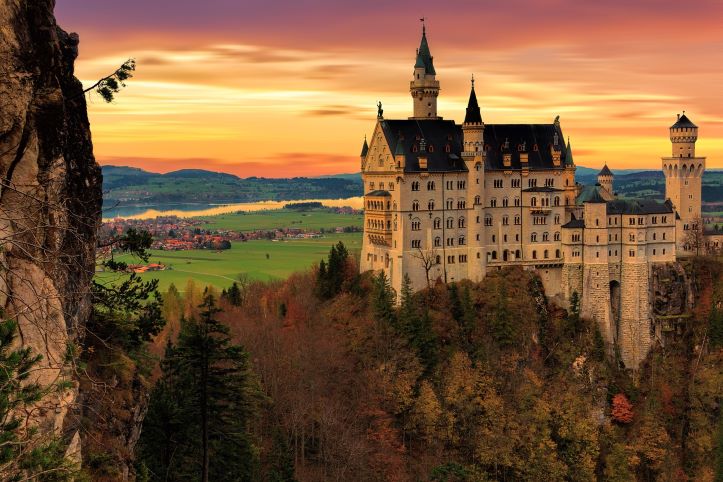
Neuschwanstein’s enchanting beauty and idyllic setting inspired the creation of one of the most beloved symbols of Disney magic—the Sleeping Beauty castle. It’s easy to see the parallels between the two structures, with their tall turrets, delicate spires, and a sense of wonder that ignites the imagination. Neuschwanstein Castle’s influence on fantasy and storytelling has extended beyond its historical significance, shaping the way we envision castles in our most cherished tales.
Natural Wonders and Landscapes
# The Northern Lights, Various Locations
In the remote reaches of the Arctic skies, a mesmerizing dance of color and light unfolds—a spectacle known as the Northern Lights. This natural phenomenon, also called the Aurora Borealis, paints the night sky with an ethereal display that has captivated observers for centuries. As if scripted by the cosmos itself, the Northern Lights grace the darkness with a symphony of colors, offering a cosmic show that defies earthly explanation.
The Northern Lights are a result of charged particles from the sun colliding with gases in Earth’s atmosphere. This collision creates luminous hues that dance across the heavens in a captivating interplay of green, pink, purple, and blue. The sight is nothing short of magical, evoking a sense of wonder and connection to the vast universe beyond our world.
To witness the Northern Lights in all their glory, one must venture to high-latitude locations near the Earth’s polar regions. Countries like Norway, Sweden, Finland, Iceland, and Canada offer some of the best vantage points for this celestial performance. The best times to catch this cosmic ballet are during the winter months, when the nights are longest and the skies are darkest.
# Plitvice Lakes National Park, Croatia
Nestled in the heart of Croatia, Plitvice Lakes National Park is a haven of natural splendor that seems almost otherworldly. This UNESCO-listed park, adorned with a mesmerizing network of interconnected lakes and cascading waterfalls, offers a glimpse into a world where water and land harmonize in breathtaking harmony.
Plitvice Lakes National Park is a masterpiece of nature’s artistry. Its series of sixteen emerald-hued lakes, connected by a series of cascading waterfalls and meandering streams, create an enchanting symphony of sights and sounds. The park’s unique geological formations, shaped over millennia, have formed terraced landscapes that add to its ethereal beauty.
The park’s allure extends beyond its aquatic wonders. Plitvice Lakes National Park is home to a diverse range of plant and animal species, creating a thriving ecosystem that delights nature enthusiasts and researchers alike. Exploring the park’s lush surroundings, you might encounter everything from colorful butterflies to elusive wildlife, each adding to the park’s rich tapestry.
For those who love to explore on foot, the park offers a network of hiking trails that wind through its forests, along its lakeshores, and over its wooden footbridges. Each step unveils a new vista, a new angle from which to admire the shimmering waters and the playful interplay of sunlight and shadows.
# Mont Saint-Michel, Normandy, France
Rising from the shores of Normandy, France, Mont Saint-Michel stands as a testament to medieval architecture’s grandeur and ingenuity. This captivating abbey, perched atop a rocky island, is a mesmerizing fusion of history, spirituality, and nature’s awe-inspiring power.
Mont Saint-Michel’s striking silhouette against the horizon evokes a sense of wonder and timelessness. The abbey, built over centuries, boasts soaring spires, fortified walls, and intricate Gothic details that harken back to an era of chivalry and devotion. Its location atop the island’s rugged pinnacle, isolated by the sea during high tides, adds to its air of mystery and enchantment.
One of Mont Saint-Michel’s most enchanting attributes is its remarkable relationship with the tides. As the ocean waters recede during low tide, the abbey appears to emerge from the sea, revealing a natural causeway that leads to the island. This magical transformation has inspired legends and stories throughout history, adding an extra layer of fascination to the site.
Surrounding the abbey, the quaint village of Mont Saint-Michel exudes old-world charm. Narrow cobbled streets wind their way through charming houses, shops, and cafés, creating an ambiance that feels suspended in time.
Cultural Landmarks
# Louvre Museum, Paris, France
The Louvre Museum is a huge tribute to human creativity and culture history. It is right in the middle of Paris, along the Seine River. As the world’s largest art museum, it houses an unparalleled and diverse collection that spans epochs, styles, and civilizations, making it a treasure trove for art enthusiasts and history aficionados alike.
The Louvre’s sprawling galleries and elegant halls house an astonishing array of artworks that have shaped the course of human artistic expression. From ancient Egyptian artifacts and classical sculptures to Renaissance masterpieces and modern art, the Louvre’s collection is a testament to the boundless creativity of civilizations across the ages. Walking through its corridors is like embarking on a journey through time, where each artwork tells a story of its era and its creator’s vision.
Among the Louvre’s vast collection, one masterpiece shines with an undeniable allure—the Mona Lisa. Leonardo da Vinci’s enigmatic portrait of a woman has captured the imagination of generations. Its cryptic smile and arresting gaze draw viewers into a realm of mystery and intrigue. The Mona Lisa’s presence at the Louvre adds a layer of allure to the museum, as visitors from around the globe converge to catch a glimpse of this iconic work of art.
# Prague Castle, Prague, Czech Republic
Perched majestically above the enchanting city of Prague, the Prague Castle complex is a living testament to the Czech Republic’s rich history and architectural diversity. This historic stronghold, a symphony of various architectural styles, has stood as a guardian of Prague’s past and a beacon of its enduring spirit.
Dominating the cityscape from its elevated position, Prague Castle is not merely a single building; it’s an expansive complex that has evolved over centuries. Its origins date back to the 9th century, and over time, it has served as a seat of power, a royal residence, and a symbol of Czech identity. The castle’s commanding presence atop Hradčany Hill offers panoramic views of Prague’s intricate streets and red-tiled roofs, a sight that captures the hearts of visitors and locals alike.
One of Prague Castle’s most captivating attributes is its amalgamation of architectural styles. Gothic, Renaissance, Baroque, and Romanesque elements seamlessly coexist within its walls, reflecting the ebb and flow of history and the tastes of different eras. The St. Vitus Cathedral, with its awe-inspiring Gothic spires, stands as a centerpiece within the complex, showcasing the artistic mastery that has left an indelible mark on Prague’s skyline.
Stepping within the castle’s courtyards and through its grand halls is like traversing through the annals of time. Each nook and cranny exudes the echoes of the past, and the cobblestone pathways lead to hidden corners where tales of Czech kings, queens, and nobility come to life.
# Alhambra, Granada, Spain
The Alhambra, located in the center of Granada, Spain, is a monument to the creative and cultural achievements of the Moors. This exquisite palace and fortress, with its intricate Islamic architecture and lush gardens, transports visitors to a world of opulence, beauty, and historical significance.
The Alhambra’s name itself carries an air of enchantment, conjuring images of sumptuous palaces and hidden courtyards. Originally constructed in the mid-13th century as a fortress, it was later transformed into a palace complex that would become the pinnacle of Moorish artistry. Its labyrinthine halls, delicate stucco work, and serene fountains are a testament to the architectural mastery that flourished during the Nasrid dynasty’s reign.
The Alhambra is a true masterpiece of Islamic architecture, marked by its intricate geometric patterns, horseshoe arches, and Arabic calligraphy that adorns its walls. Its courtyards, such as the iconic Court of the Lions, are a symphony of symmetry and tranquility. The Generalife Gardens, adjacent to the palace, offer a sensory feast with their aromatic flowers, bubbling water features, and carefully sculpted landscapes.
Walking through the Alhambra is like stepping into a realm where time slows down, where the splendor of the past feels palpable. Each archway and alcove is a reminder of the skill, devotion, and vision of those who designed and built it.
Scenic Views and Landscapes
# Cinque Terre, Italy
Along the rugged Italian Riviera lies a treasure trove of vibrant charm—Cinque Terre. This UNESCO-listed coastal region, adorned with a collection of colorful villages, offers a visual feast that celebrates both nature’s beauty and human resilience. With its captivating landscapes and inviting hiking trails, Cinque Terre is a paradise for wanderers and seekers of scenic splendor.
Cinque Terre, translating to “Five Lands,” comprises five distinct villages: Monterosso al Mare, Vernazza, Corniglia, Manarola, and Riomaggiore. Each village is a testament to the harmonious relationship between humans and their environment. The buildings, painted in a kaleidoscope of colors, hug the rugged coastline and seem to defy gravity as they perch on cliffs overlooking the Mediterranean Sea.
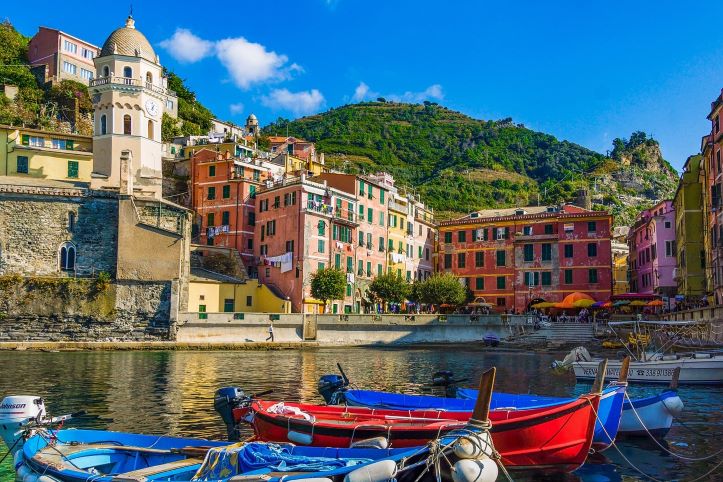
Exploring Cinque Terre is an adventure that takes you beyond traditional sightseeing. The network of hiking trails that connect the villages offers an opportunity to witness the beauty of the region from various angles. As you traverse the trails, you’ll be treated to panoramic vistas of azure waters, terraced vineyards, and charming hamlets. The views are not just picturesque; they are a sensory experience that captures the essence of coastal Italy.
# Swiss Alps, Switzerland
Stretching across Switzerland’s picturesque landscape, the Swiss Alps stand as a testament to nature’s grandeur and a playground for adventure seekers. This majestic mountain range, renowned for its stunning panoramas and world-class skiing, offers an escape into a realm of both serene beauty and heart-pounding excitement.
The Swiss Alps are a symphony of rugged peaks, pristine glaciers, and charming alpine villages. Nestled amid this breathtaking beauty are renowned ski resorts that draw enthusiasts from all corners of the globe. From the powdery slopes of St. Moritz to the iconic Matterhorn towering over Zermatt, the Swiss Alps offer a winter wonderland where skiing and snowboarding become exhilarating art forms.
Beyond winter sports, the Swiss Alps are a playground for those with a penchant for adventure. Hiking, mountain biking, and paragliding are just a few of the ways to immerse yourself in the Alps’ natural splendor. As you ascend to higher altitudes, you’ll be rewarded with panoramas that seem almost too beautiful to be real. The air is crisp, the skies are vast, and the mountains stretch toward infinity.
# Cliffs of Moher, County Clare, Ireland
Standing tall and proud along Ireland’s Atlantic coast, the Cliffs of Moher are nature’s own masterpiece, an awe-inspiring display of raw beauty and unyielding grandeur. These dramatic sea cliffs, adorned with their rugged contours and breathtaking views, beckon adventurers and wanderers to witness the forces of nature at their most captivating.
The Cliffs of Moher are a testament to the Earth’s remarkable ability to sculpt landscapes of astonishing magnificence. Rising dramatically from the crashing waves below, the cliffs command attention with their sheer vertical drops that plunge hundreds of feet into the churning Atlantic Ocean. As the salty sea breeze mingles with the mist, visitors can’t help but feel humbled by the raw power of the elements.
Nestled near the cliffs is a visitor center that serves as a gateway to this natural wonder. Here, you can learn about the geological and ecological significance of the cliffs, enhancing your understanding of the world you’re about to explore. From the visitor center, a network of coastal walking trails meanders along the cliffs, inviting you to immerse yourself in their beauty at your own pace.
Modern Landmarks
# Atomium, Brussels, Belgium
Rising boldly against the Brussels skyline, the Atomium stands as a testament to the boundless possibilities of human creativity and the spirit of post-war innovation. This futuristic stainless steel structure, both a building and a museum, encapsulates the essence of modernist architecture while inviting visitors to explore its intriguing interiors.
The Atomium’s striking design is unlike anything you’ve seen before. Comprising interconnected spheres and connecting tubes, it resembles a molecule magnified a billion times—a symbol of progress, science, and the potential for a brighter future. Inside its gleaming spheres, you’ll find a world of discovery awaiting. From exhibitions on art and technology to interactive displays that engage the mind, the Atomium is a playground of learning and imagination.
Born in the aftermath of World War II, the Atomium is more than just an architectural marvel; it’s a symbol of resilience and hope. Conceived for the 1958 Brussels World’s Fair (Expo 58), it captured the zeitgeist of the era—a time of rediscovery and reimagining. Its design embodies the spirit of progress and a forward-looking mindset that sought to reshape the world through innovation and collaboration.
# Millennium Bridge, London, England
Spanning the River Thames with a graceful arc of contemporary design, the Millennium Bridge stands as a symbol of London’s dynamic spirit and its seamless blend of tradition and innovation. This pedestrian suspension bridge, connecting St. Paul’s Cathedral and Tate Modern, is not just a physical crossing; it’s a testament to the city’s evolving identity and the power of architecture to unite the past and the present.
The Millennium Bridge’s sleek and minimalist design is a stark departure from London’s more traditional architectural landmarks. This suspension bridge, with its slender steel cables and glass deck, exudes a sense of lightness and modernity. As you step onto its transparent surface, you’re treated to unobstructed views of the river below, the iconic skyline, and the bustling life that flows around you.
The bridge’s significance goes beyond its physical structure; it’s a metaphorical bridge that links two distinct worlds of culture and creativity. On one end, St. Paul’s Cathedral—a timeless symbol of London’s spiritual heritage—rises majestically, connecting us to the city’s historical roots. On the other end, the Tate Modern—a repository of contemporary art and expression—ushers us into the world of the present and the future.
# Brandenburg Gate, Berlin, Germany
Standing proudly as a neoclassical masterpiece, the Brandenburg Gate is more than just an architectural marvel—it’s a powerful symbol of unity, resilience, and the evolving chapters of Berlin’s history. This historic gate, which has borne witness to pivotal events, serves as a tangible link between the past and the present, embodying the city’s spirit of transformation.
The Brandenburg Gate’s grandeur is a testament to the architectural prowess of its time. Completed in the late 18th century, it served as a gateway to the city, welcoming visitors with its stately columns, Doric frieze, and triumphant Quadriga statue atop the gate. Its location at the intersection of bustling boulevards adds to its significance as a hub of activity and an embodiment of Berlin’s heartbeat.
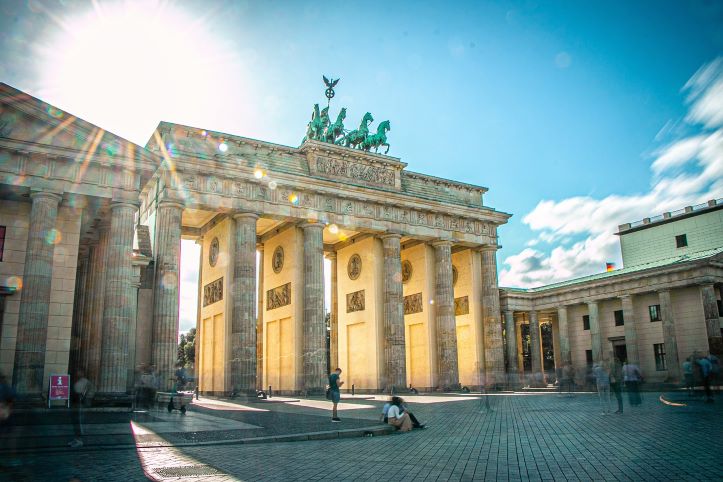
Throughout its existence, the Brandenburg Gate has stood as a silent yet potent witness to history’s unfolding drama. From moments of triumph to times of division, the gate has remained a constant presence. It survived both World Wars and became a poignant symbol during the Cold War when it stood within the no-man’s land of the Berlin Wall, representing the city’s separation and yearning for reunification.
# Charles Bridge, Prague, Czech Republic
The Alhambra is a monument to the artistic and cultural greatness of the Moorish people. It is in the center of Granada, Spain. This iconic bridge, adorned with baroque statues and offering picturesque views, carries with it the echoes of centuries and invites visitors to step into a world where history and beauty converge.
The Charles Bridge is more than just a passageway; it’s a passage through time. Built in the 14th century, its stone arches have welcomed countless travelers, traders, and pilgrims over the centuries. It stands as a silent witness to the city’s transformation and a testament to the craftsmanship of generations past.
As you traverse the Charles Bridge, you’re met with an enchanting gallery of sculptures that line its sides. These baroque statues, each with its own story and significance, add an air of romance and mystique to the bridge’s atmosphere. Against the backdrop of Prague’s spires and rooftops, the bridge becomes a canvas where history and art intertwine.
But the bridge’s allure goes beyond its sculptures; it’s in the moments you spend there. It’s in the musicians playing lilting melodies, the artists capturing the scene on canvas, and the way the sunlight dances on the river’s surface. It’s in the feeling of being part of a timeless tapestry, where the past and the present are inextricably linked.
Conclusion
In the intricate weave of Europe’s cultural mosaic, its must-visit landmarks stand as vibrant threads that paint a vivid tapestry of human creativity and history. From the grandeur of the Eiffel Tower to the serenity of the Cliffs of Moher, each landmark tells a unique tale—a tale of civilizations that rose, fell, and left behind indelible imprints.
As travelers, we’re invited to explore this diverse array of treasures, to immerse ourselves in the stories they tell, and to connect with the essence of each destination. So, let curiosity be our compass as we journey through these must visit landmarks in Europe. And discover its remarkable heritage, and creating our own chapters in the continent’s ongoing narrative.
Before going on the journey, learn what are the essential travel accessories to pack. And you won’t need to take stress for packing.


